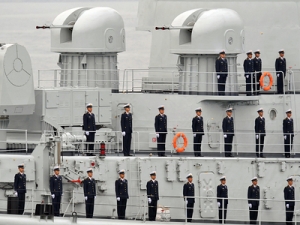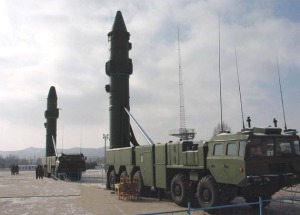
China's People's Liberation Army (PLA) Navy sailors on review. Image: Getty
The Naval War College Review Spring, 2009 issue published an interesting article titled, “Gunboats for China’s New “Grand Canals,” written by Andrew Erickson and Lyle Goldstein, whom are research faculty in the Center for Naval Warfare Studies at the U.S Naval War College.
This article explores China’s “military capacity to protect its long and increasingly vital maritime oil supply lines.”
The authors believe “it is time to consider seriously the prospect of future PLAN missions to defend Chinese interests not only in East Asia but also beyond.”
Informative highlights over China’s oil security and the PLAN’s role in securing it:
- In 2007, approximately 85 percent of Chinese oil imports passed through the Strait of Malacca;
- Defense of oil SLOCs [sea lines of communication] may become a driver in future PLAN [People’s Liberation Army Navy] evolution;
- Gunboats were once used to invade China in the name of protecting international commerce. Now China is itself acquiring powerful warships, but its precise reasons for doing so remain unclear;
- China’s 2008 Defense White Paper for the first time treats the ground forces as a distinct service equivalent to the Navy, Air Force, and Second Artillery, suggesting that they are becoming less dominant within the military and that the PLAN may grow correspondingly over time in funding and mission scope;
- The PLA Navy’s subsequent deployment of two destroyers and a supply ship to the Gulf of Aden is an unprecedented move that may presage a more active Chinese presence near global maritime energy routes.
Erickson and Goldstein delve into voluminous Chinese naval and maritime affairs literature for an understanding of China’s mindset into advancing maritime oil security essential to securing their economic growth.
They direct attention to “Chinese naval and maritime analysts view that PLAN’s capabilities for protecting China’s long oil SLOCs are minimal at present.”
Both authors agree on a need for “cooperation to blunt nonstate threats to maritime oil shipments can help build trust and reduce the potential for state-on-state naval confrontations over energy-supply security.”


